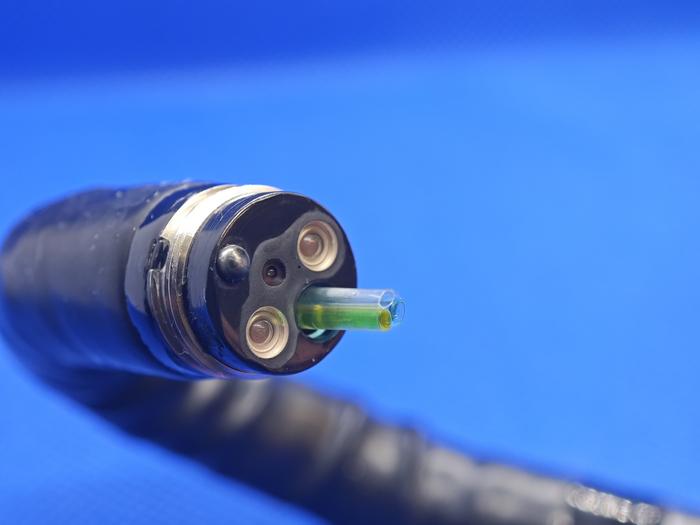Gastrointestinal (GI) surgery, interventional screening procedures such as colonoscopies, and naturally occurring complications such as ulcers, can lead to adverse events, including internal bleeding, intestinal wall perforation, and leakage. To address the limitations presented by currently available GI wound management materials, researchers at Brigham and Women’s Hospital, a founding member of the Mass General Brigham healthcare system, developed a sprayable adhesive hydrogel product.
The research team developed a unique biomaterial to promote wound healing under various harsh conditions in the GI tract that make healing these wounds particularly challenging such as acidic PH, enzymes, bacteria, and muscle contraction. Additionally, they designed the material to be easy to apply and usable with current technology; it is delivered using a miniscule catheter, small enough to be inserted into any commercial endoscope. Upon contact with tissue, the material immediately forms an adhesive shield.
In preclinical studies using large animal models, the research team found that the hydrogel, which the researchers named commercially as “Gastroshield”, promoted rapid wound healing, provided prolonged tissue protection, and minimized the risk of delayed complications. When compared to six commercially available materials on the market for GI wound healing, it demonstrated superior durability, lasting for 3-7 days compared to 1-2 days, and exhibited the adhesive properties of the strongest materials in the market, without cytotoxic properties.
“Our tissue-responsive adhesive technology is engineered to interact with the tissue to provide prolonged lesion protection over days,” said Natalie Artzi, PhD, a biomedical engineer at Brigham and Women’s and cofounder of BioDevek, which holds patents on the materials and is spearheading efforts to navigate next steps to bring Gastroshield from the lab to the clinic.
“This approach allows us to prevent complications following polyp removal, and to manage other wounds at risk of bleeding in traditionally challenging-to-seal tissues across the gastrointestinal tract, setting the stage for future development of biomaterials for minimally invasive surgical procedures.”
Read more in Advanced Materials.


